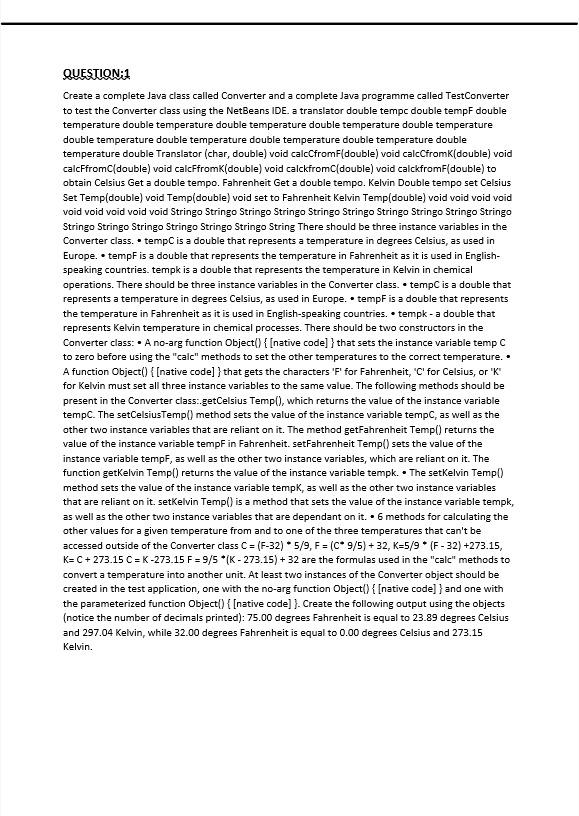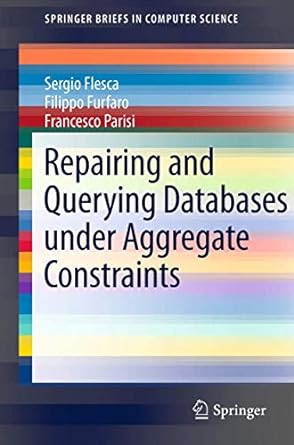PLEASE DO NOT COPY PASTE FROM CHEGG/OTHERWISE I'LL REPORT YOU

QUESTION:1 Create a complete Java class called Converter and a complete Java programme called TestConverter to test the Converter class using the NetBeans IDE. a translator double tempc double tempF double temperature double temperature double temperature double temperature double temperature double temperature double temperature double temperature double temperature double temperature double Translator (char, double) void calcCfromF[double) void calcCfrom(double) void calcFfrom [double) void calcFfrom K(double) void calckfrom [double) void calckfromF(double) to obtain Celsius Get a double tempo. Fahrenheit Get a double tempo. Kelvin Double tempo set Celsius Set Temp(double) void Temp/double) void set to Fahrenheit Kelvin Templdouble) void void void void void void void void void Stringo Stringo Stringo Stringo Stringo Stringo Stringo Stringo Stringo Stringo Stringo Stringo Stringo Stringo Stringo Stringo String There should be three instance variables in the Converter class. tempC is a double that represents a temperature in degrees Celsius, as used in Europe.. tempF is a double that represents the temperature in Fahrenheit as it is used in English- speaking countries. tempk is a double that represents the temperature in Kelvin in chemical operations. There should be three instance variables in the Converter class.tempC is a double that represents a temperature in degrees Celsius, as used in Europe.. tempF is a double that represents the temperature in Fahrenheit as it is used in English-speaking countries. tempk - a double that represents Kelvin temperature in chemical processes. There should be two constructors in the Converter class: A no-arg function Object() { [native code] } that sets the instance variable tempo to zero before using the "calc" methods to set the other temperatures to the correct temperature.. A function Object() { [native code] } that gets the characters 'F' for Fahrenheit, 'C' for Celsius, or "K" for Kelvin must set all three instance variables to the same value. The following methods should be present in the Converter class.getCelsius Templ), which returns the value of the instance variable tempC. The setCelsiusTempl) method sets the value of the instance variable tempC, as well as the other two instance variables that are reliant on it. The method getFahrenheit Temp() returns the value of the instance variable tempF in Fahrenheit. setFahrenheit Templ) sets the value of the instance variable temps, as well as the other two instance variables, which are reliant on it. The function getKelvin Temp) returns the value of the instance variable tempk. The setKelvin Templ) method sets the value of the instance variable temp, as well as the other two instance variables that are reliant on it. setKelvin Temp() is a method that sets the value of the instance variable tempk, as well as the other two instance variables that are dependant on it. 6 methods for calculating the other values for a given temperature from and to one of the three temperatures that can't be accessed outside of the Converter class C = (F-32) * 5/9, F = (C 9/5) + 32, K=5/9 * (F-32) +273.15, K=C+ 273.15 C=K-273.15 F = 9/5 *(K-273.15) + 32 are the formulas used in the "calc" methods to convert a temperature into another unit. At least two instances of the Converter object should be created in the test application, one with the no-arg function Object() { [native code] } and one with the parameterized function Object() { [native code] ). Create the following output using the objects (notice the number of decimals printed): 75.00 degrees Fahrenheit is equal to 23.89 degrees Celsius and 297.04 Kelvin, while 32.00 degrees Fahrenheit is equal to 0.00 degrees Celsius and 273.15 Kelvin







